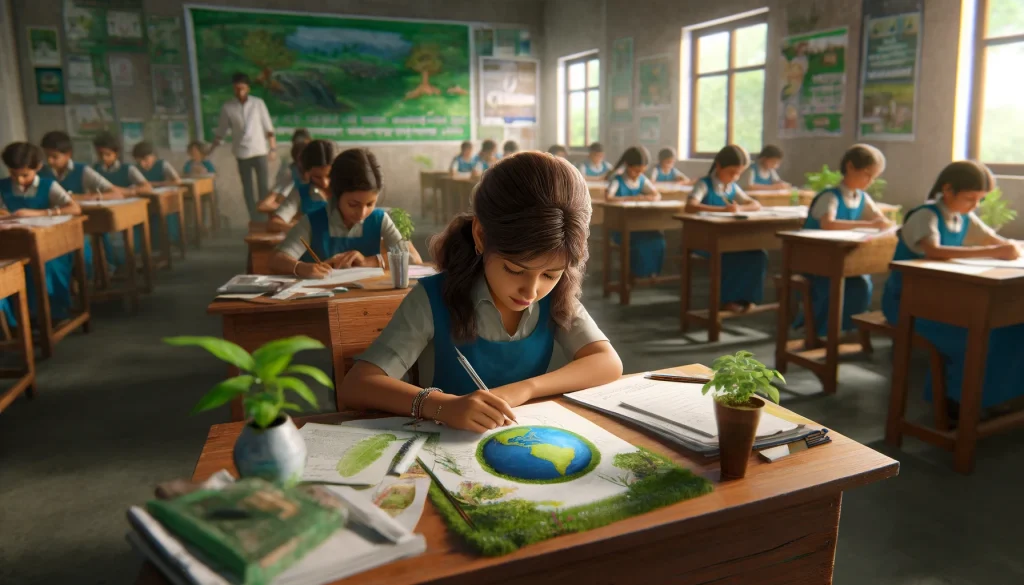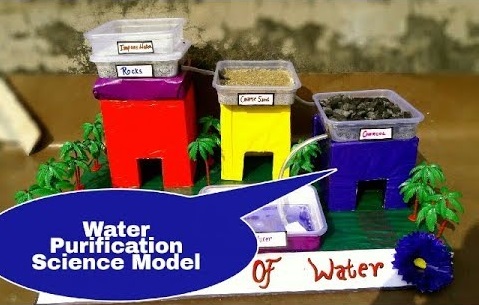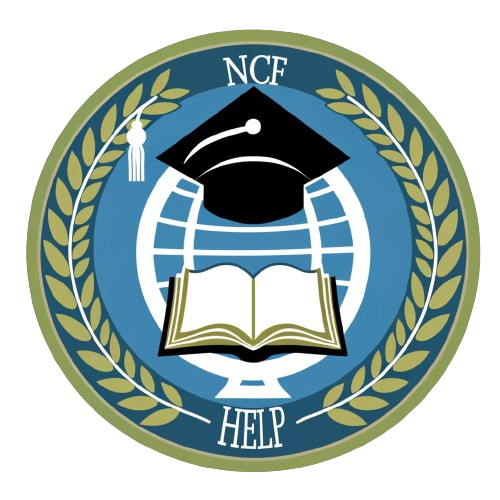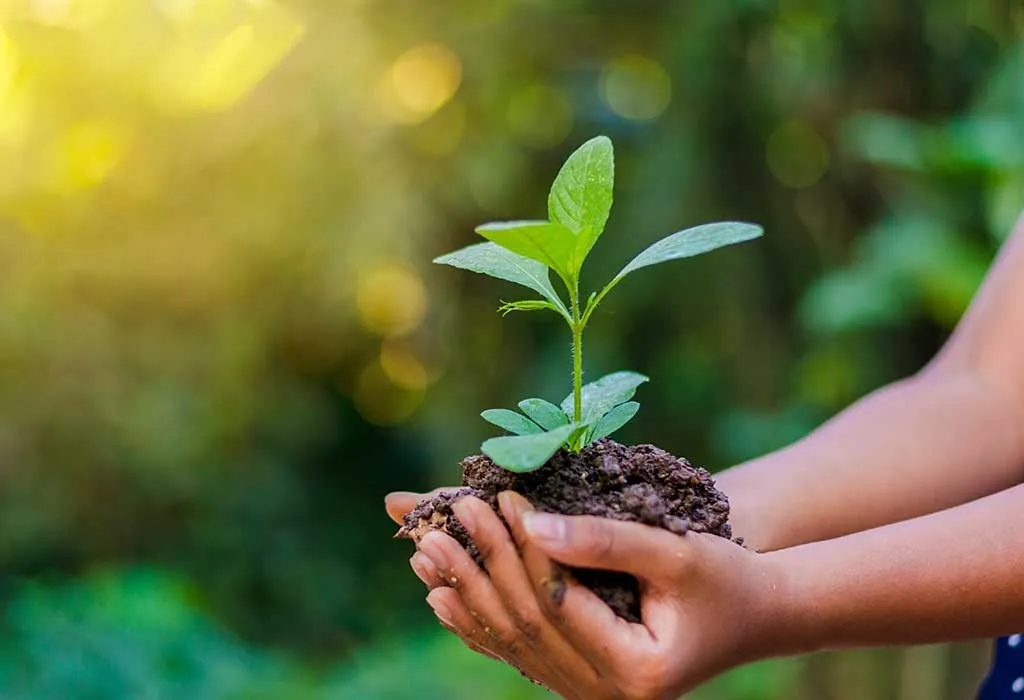With World Environment Day just around the corner on June 5th, 2024, and the heat wave hitting North India, we as educators need innovative ways to keep the learning going from home. That’s why we launched exciting projects students can do with their parents, blending environmental awareness with class syllabus topics. As a Principal, I’ve seen the incredible impact of experiential learning firsthand. Let me share some inspiring examples from our school that highlight how we’ve made learning engaging and multidisciplinary across various grades and subjects.
Foundational Stage:
In our FS classes, we have embraced the ideas from the NCF-FS 2022 to create a rich, hands-on learning environment. For instance, during our unit on plants, our youngest learners were not just told about the parts of a plant; they planted seeds in small pots, observed their growth daily, and each one had a plant they had planted in a pot. They observed it grow and when it was big enough to be planted, we gave them the pots to take home and plant in their home gardens. This hands-on activity helped them understand the life cycle of plants in a tangible and engaging way. This also helps foster a deeper connection to the subject matter. We timed it a month before World Environment Day so that they could communicate the same to their parents too. This activity is performed every year with the full month dedicated to plants, veggies, and environmental themes.

Primary Grades:
Similarly, in our primary grades, during a science unit on weather, students became meteorologists for a week. They tracked weather patterns, created weather charts, and even presented their own weather forecasts to the class. This not only reinforced their understanding of weather concepts but also developed their communication skills and confidence in public speaking.
Middle School:
In our middle school, experiential learning takes on more complexity and depth, aligning with the developmental stage of our students. For example, in a geography unit on ecosystems, our students engaged in a project where they created detailed dioramas of various ecosystems, such as deserts, rainforests, and tundras. Each group researched their assigned ecosystem, collected materials, and built their models to reflect the flora, fauna, and climatic conditions accurately. This project culminated in a gallery walk where students presented their dioramas to their peers and teachers, explaining the unique characteristics and importance of their ecosystems. This hands-on activity not only deepened their understanding of geographical concepts but also honed their research and presentation skills.
Higher Grades:
I’ll explain the higher grades in more detail as this took the longest time and discussion for our teachers because of their already busy schedule. We asked students to design an “Eco-Friendly Water Filtration Project.” This included key physics, chemistry, and biology concepts from the students’ syllabus, specifically focusing on motion, gravity, chemical bonds, mixtures, and environmental studies.

Project Overview:
Objective:
Students were tasked with designing and constructing a water filtration system using environmentally friendly and locally available materials. The goal was to purify contaminated water, making it safe for drinking while understanding the underlying scientific principles. They could use anything that was readily available, reusable, and environmentally friendly.
Procedure:
- Research and Planning: Students began by researching different water filtration methods and materials that can be used for filtration. They discussed the properties of each material and why it might be effective in removing contaminants from water.
- Design Phase: In small groups of six each, students designed their water filtration systems. They applied their knowledge of mixtures and solutions, considering how each layer of their filter would interact with the contaminated water to remove impurities.
- Construction: Using their designs, students built their filtration systems. Most of them used old plastic bottles or pipes that were discarded. They layered the materials inside the plastic bottles, ensuring that each layer would serve a specific purpose, such as filtering out large particles (gravel), smaller particles (sand), and chemicals (charcoal).
- Testing and Observation: Once the filters were constructed, students poured the contaminated water through their systems and observed the filtration process. They analyzed the filtered water for clarity, odor, and any remaining particles.
Scientific Concepts Applied:
- Motion and Gravity: Students explored how gravity assists in the filtration process by pulling water down through the filter layers.
- Chemical Bonds and Solutions: They discussed how activated charcoal uses adsorption to remove impurities at the molecular level, relying on chemical bonds.
- Mixtures and Solutions: The project illustrated the concept of separating mixtures and solutions, as the filter removed solid particles and dissolved substances from the water.
Assessment:
The assessment for this project was multifaceted, focusing on both the process and the final product. It included the following components:
- Project Design and Report: Students submitted a 3-4 page report that included their research, the rationale behind their design choices, and a step-by-step construction guide. They were assessed on their understanding of the scientific concepts and the effectiveness of their design.
- Practical Demonstration: Each group demonstrated their water filtration system in action, explaining how each layer worked and the principles behind it. This allowed teachers to assess their practical skills and ability to communicate scientific concepts.
- Water Quality Analysis: The filtered water was tested for clarity and purity. While we didn’t have access to advanced lab equipment, basic tests such as checking the TDS, turbidity, and presence of any visible impurities were conducted. The effectiveness of the filtration system was a key assessment criterion.
- Group Collaboration and Presentation: Students were also assessed on their ability to work collaboratively and present their findings to the class. This included peer evaluations to provide insight into each student’s contribution to the group effort.

Final Thoughts
By sharing these experiences and examples, I hope to inspire other educators to embrace experiential learning in their own classrooms. It’s about creating a dynamic and interactive learning environment where students are active participants in their education, fostering curiosity, creativity, and a lifelong love for learning. I am open to any queries and criticism on what is being practiced.


Comments
3 responses to “Experiential Learning in Action through Hands-On Projects Linked to Environmental Science in the Indian Classroom”
Well explain ! 👍
Good hands on projects for the students at different Grade levels.
Happy to help! Please feel free to share your experience with any of these in your classrooms or your own ideas here!